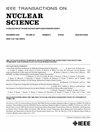硬件加速技术在FPGA实时框架中的集成
IF 1.9
3区 工程技术
Q3 ENGINEERING, ELECTRICAL & ELECTRONIC
引用次数: 0
摘要
ITER国际聚变实验组织正在实施实时框架(RTF),以促进使用基于GNU/ linux的ITER CODAC核心系统(CCS)软件分发优化实时性能的仪器和控制(I&C)应用程序的开发、部署和执行。这篇文章探讨了在现场可编程门阵列(fpga)中使用硬件加速技术来实现RTF中需要特定计算密集型功能的实时应用程序的可行性。通过将高级合成语言(HLS)和开放计算语言(OpenCL)等语言与FPGA设备结合使用,可以实现特定的硬件架构来解决某些计算问题,从而获得性能并限制延迟。这项工作展示了在ITER CCS中集成HLS和OpenCL的方法,以及使用商用现成的基于fpga的设备在两种常见处理操作(矢量加法和矩阵乘法)的执行时间方面获得的结果。本文章由计算机程序翻译,如有差异,请以英文原文为准。
Integration of Hardware Acceleration Techniques in a Real-Time Framework Using FPGA Devices
The ITER International Fusion Experiment Organization is implementing the real-time framework (RTF) to facilitate the development, deployment, and execution of instrumentation and control (I&C) applications optimized for real-time performance using the GNU/Linux-based ITER CODAC Core System (CCS) software distribution. This contribution examines the feasibility of using hardware acceleration techniques with field-programmable gate arrays (FPGAs) to implement real-time applications in the RTF that requires specific compute-intensive functions. By combining the use of languages such as high-level synthesis (HLS) and open computing language (OpenCL) with FPGA devices, specific hardware architectures can be implemented to solve certain computational problems to gain performance and limit latency. This work shows the methodology used to integrate HLS and OpenCL in the ITER CCS and the results obtained in terms of execution time for two common processing operations, vector addition and matrix multiplication, using a commercial off-the-shelf FPGA-based device.
求助全文
通过发布文献求助,成功后即可免费获取论文全文。
去求助
来源期刊

IEEE Transactions on Nuclear Science
工程技术-工程:电子与电气
CiteScore
3.70
自引率
27.80%
发文量
314
审稿时长
6.2 months
期刊介绍:
The IEEE Transactions on Nuclear Science is a publication of the IEEE Nuclear and Plasma Sciences Society. It is viewed as the primary source of technical information in many of the areas it covers. As judged by JCR impact factor, TNS consistently ranks in the top five journals in the category of Nuclear Science & Technology. It has one of the higher immediacy indices, indicating that the information it publishes is viewed as timely, and has a relatively long citation half-life, indicating that the published information also is viewed as valuable for a number of years.
The IEEE Transactions on Nuclear Science is published bimonthly. Its scope includes all aspects of the theory and application of nuclear science and engineering. It focuses on instrumentation for the detection and measurement of ionizing radiation; particle accelerators and their controls; nuclear medicine and its application; effects of radiation on materials, components, and systems; reactor instrumentation and controls; and measurement of radiation in space.
 求助内容:
求助内容: 应助结果提醒方式:
应助结果提醒方式:


